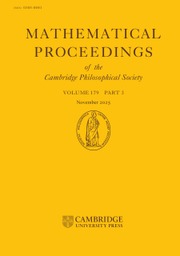X-ray excitation of lutecium
Published online by Cambridge University Press: 24 October 2008
Extract
The radioactivity of the naturally and artificially produced lutecium isotope has been investigated on a number of occasions (l, 2). A 4 hr. activity was observed when lutecium was activated by slow neutrons and later a 6-day period was observed by Hevesi and Levi (3). Heyden and Wefelmeier (4) discovered the natural radioactivity of lutecium, while Libby (5) made measurements indicating that this natural activity consisted of a negative electron spectrum of maximum energy 0·215 MeV. Mattauch and others (6) showed from mass spectrograph evidence that in addition to the main isotope of lutecium of mass 175 there was an isotope of mass 176 with an abundance of 2·5%. The second isotope had been reported previously by Gollnow (7), but not identified. Since Hf176 and Yb176 are known to be stable, whereas Hf175 and Yb175 do not exist in nature, the radioactivity of natural lutecium must be assigned to Lu176. Flammersfeld and Mattauch (8) measured the energy of the natural spectrum by the absorption method and found it to be 0·4 MeV. They observed also a γ-radiation (1–2 quanta per β-particle) of 0·26 MeV. In addition, they investigated the radiations resulting from slow neutron bombardment of lutecium. They estimate the shorter period, previously reported by Hevesi and Levi, to be 3·4 hr. and to consist of a β-spectrum of maximum energy 1·150 MeV. They estimate the longer period to be 6·6 days and to consist of β-spectrum of maximum energy 0·440 MeV. In view of the closeness of this latter energy to 0·4 MeV., Flammersfeld and Mattauch allocate the 6·6 days' activity to an isomeric state of Lu176. The short period is allocated by these authors to Lu177.
- Type
- Research Article
- Information
- Mathematical Proceedings of the Cambridge Philosophical Society , Volume 43 , Issue 3 , July 1947 , pp. 429 - 432
- Copyright
- Copyright © Cambridge Philosophical Society 1947
References
REFERENCES
- 3
- Cited by


